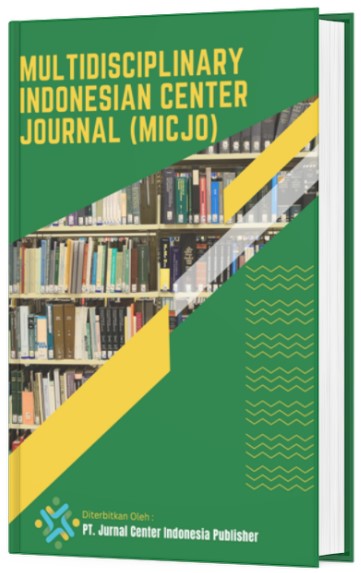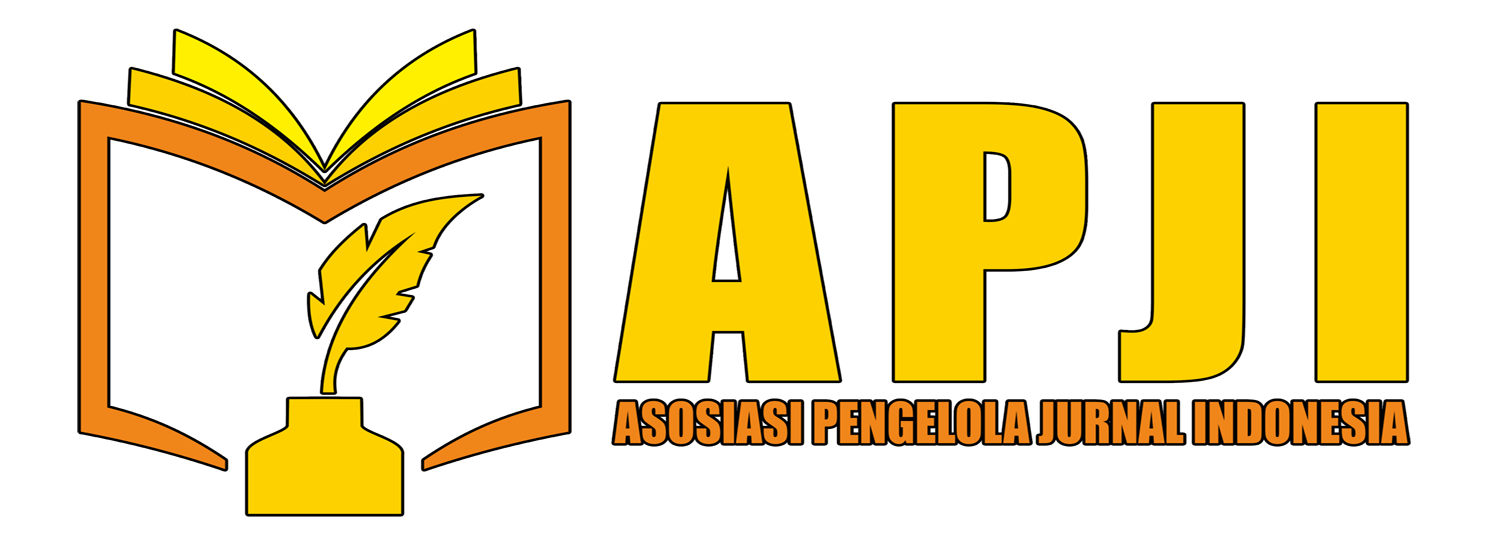BRIDGING FINANCIAL AND DIGITAL COMPETENCES WITH INVESTMENT RISK THROUGH THE MEDIATING POWER OF INFORMATION DISCLOSURE
DOI:
https://doi.org/10.62567/micjo.v2i3.1067Keywords:
financial literacy, digital literacy, FOMO, information disclosure, market discipline, investment risk toleranceAbstract
Digital technologies are changing rapidly, and this has changed the financial services industry, especially how people decide where to invest their money. This study looks at how digital literacy, financial literacy, and fear of missing out (FOMO) affect how much risk young investors are willing to take when investing with information disclosure as a mediating variable. The research data is taken from 447 investors of Gen Y and Z in West Java and used Partial Least Squares-Structural Equation Modeling (PLSSEM). The results show that being financially literate makes people more likely to search for financial information, but it also makes them less willing to take risks when investing. This suggests that people who know a lot about money are more careful when they invest. On the other hand, FOMO has a positive effect on both information searching and risk tolerance, showing how emotions can affect people online. Digital literacy helps people be more willing to take risks, but it does not have a big effect on how much information they search. These results show how important cognitive and emotional factors are in determining how people act when it comes to IT-driven finances. The study helps with responsible digital transformation by showing how important it is for individuals to be ready to navigate fintech ecosystems. It also gives regulators, platform providers, and educators ideas on how to promote more informed and resilient investment practices.
Downloads
References
Akhmedov, K., Ibragimova, Z., Qodirov, A., & Ablazov, N. (2024). Robo-Advisors and Investment Management: Analyzing the Role of AI in Personal Finance. 2024 International Conference on Knowledge Engineering and Communication Systems (ICKECS), 1, 1–5. https://doi.org/10.1109/ICKECS61492.2024.10617229
Alamsyah, A., Kusuma, G. N. W., & Ramadhani, D. P. (2024). A Review on Decentralized Finance Ecosystems. Future Internet, 16(3), 76. https://doi.org/10.3390/fi16030076
Badan Pusat Statistik. (2023). Statistik Pemuda Indonesia 2023. https://www.bps.go.id/id/publication/2023/12/29/18781f394974f2cae5241318/statistics-of-indonesian-youth-2023.html
Bawden, D. (2001). Information and digital literacies: a review of concepts. Journal of Documentation, 57(2), 218–259. https://doi.org/10.1108/EUM0000000007083
Brandonisio, A., Barile, D., Secundo, G., & Mariani, M. (2025). A new era: managing green investments through Robo-Advisors. Management Decision. https://doi.org/10.1108/md-06-2024-1268
Chen, H., & Volpe, R. P. (1998). An Analysis of Personal Financial Literacy Among College Students. Financial Services Review, 7(2), 107–128. https://doi.org/10.1016/S1057-0810(99)80006-7
CNN Indonesia. (2024, March 26). OJK Ungkap Kerugian Investasi Bodong 2017-2023 Sentuh Rp139 T. https://www.cnnindonesia.com/ekonomi/20240326164302-78-1079244/ojk-ungkap-kerugian-investasi-bodong-2017-2023-sentuh-rp139-t
DQ Institute. (2019). DQ Global Standards Report 2019. https://www.dqinstitute.org/dq-framework
Friederich, F., Meyer, J., Matute, J., & Palau‐Saumell, R. (2024). CRYPTO‐MANIA: How fear‐of‐missing‐out drives consumers’ (risky) investment decisions. Psychology & Marketing, 41(1), 102–117. https://doi.org/10.1002/mar.21906
Grable, J., & Lytton, R. H. (1999). Financial risk tolerance revisited. Financial Services Review, 8(3). https://doi.org/10.1016/S1057-0810(99)00041-4
Gupta, S., & Shrivastava, M. (2022). Herding and loss aversion in stock markets: mediating role of fear of missing out (FOMO) in retail investors. International Journal of Emerging Markets, 17(7), 1720–1737. https://doi.org/10.1108/IJOEM-08-2020-0933
Hague, C., & Payton, S. (2010). Digital literacy across the curriculum. www.futurelab.org.uk/
Hair, J. F. ., Hult, G. T. M. ., Ringle, C. M. ., & Sarstedt, Marko. (2017). A primer on partial least squares structural equation modeling (PLS-SEM). Sage.
Halim, Z. A., Zolkefli, M. N., Kusairi, S., Nor, S. M., Zawawi, N. H. M., & Sukemi, M. N. (2021). Investment literacy, social influence and undergraduates’ readiness to invest: dataset from Malaysia. Data in Brief, 34, 106700. https://doi.org/10.1016/j.dib.2020.106700
Kaloeti, D. V. S., Kurnia S, A., & Tahamata, V. M. (2021). Validation and psychometric properties of the Indonesian version of the Fear of Missing Out Scale in adolescents. Psicologia: Reflexão e Crítica, 34(1), 15. https://doi.org/10.1186/s41155-021-00181-0
Kass-Hanna, J., Lyons, A. C., & Liu, F. (2022). Building financial resilience through financial and digital literacy in South Asia and Sub-Saharan Africa. Emerging Markets Review, 51, 100846. https://doi.org/10.1016/j.ememar.2021.100846
Kaur, M., Jain, J., & Sood, K. (2024). “All are investing in Crypto, I fear of being missed out”: examining the influence of herding, loss aversion, and overconfidence in the cryptocurrency market with the mediating effect of FOMO. Quality & Quantity, 58(3), 2237–2263. https://doi.org/10.1007/s11135-023-01739-z
KOMINFO, & Katadata Insight Center. (2022). Status Literasi Digital di Indonesia 2022. https://databoks.katadata.co.id/publikasi/2023/02/01/status-literasi-digital-di-indonesia-2022
Kumar, J., Rani, M., Rani, G., & Rani, V. (2024). All are interesting to invest, I fear of missing out (FOMO): a comparative study among self-employed and salaried investors. Journal of Financial Regulation and Compliance. https://doi.org/10.1108/JFRC-01-2024-0010
Liu, Z.-J., Tretyakova, N., Fedorov, V., & Kharakhordina, M. (2020). Digital Literacy and Digital Didactics as the Basis for New Learning Models Development. International Journal of Emerging Technologies in Learning (IJET), 15(14), 4. https://doi.org/10.3991/ijet.v15i14.14669
Lusardi, A. (2019). Financial literacy and the need for financial education: evidence and implications. Swiss Journal of Economics and Statistics, 155(1), 1. https://doi.org/10.1186/s41937-019-0027-5
Muhamad, S., Kusairi, S., & Zamri, N. (2021). Savings behaviour of bottom income group: Is there any role for financial efficacy and risk preference? Economics & Sociology, 14(2), 56–70. https://doi.org/10.14254/2071-789X.2021/14-2/3
Nguyen, D. S., Hoang, T. H. Van, Pho, K.-H., & Nhan, D. T. T. (2023). Financial Literacy and portfolio diversification: Evidence from Vietnam. Journal of Competitiveness, 15(3). https://doi.org/10.7441/joc.2023.03.05
Nyakurukwa, K., & Seetharam, Y. (2022). Household stock market participation in South Africa: the role of financial literacy and social interactions. Review of Behavioral Finance, 16(1), 186–201. https://doi.org/10.1108/RBF-03-2022-0083
Organisation for Economic Co-operation and Development. (2022). OECD/INFE Toolkit for Measuring Financial Literacy and Financial Inclusion 2022. https://doi.org/https://doi.org/10.1787/cbc4114f-en
Organisation for Economic Co-operation and Development. (2024). OECD/INFE Survey Instrument to Measure Digital Financial Literacy. https://doi.org/https://doi.org/10.1787/548de821-en
Otoritas Jasa Keuangan. (2020). Hasil Survei Nasional Literasi dan Inklusi Keuangan (SNLIK) Tahun 2019. https://ojk.go.id/id/berita-dan-kegiatan/publikasi/Pages/Survei-Nasional-Literasi-dan-Inklusi-Keuangan-2019.aspx
Otoritas Jasa Keuangan. (2022). Hasil Survei Nasional Literasi dan Inklusi Keuangan (SNLIK) Tahun 2022. https://ojk.go.id/id/berita-dan-kegiatan/info-terkini/Pages/Infografis-Survei-Nasional-Literasi-dan-Inklusi-Keuangan-Tahun-2022.aspx
Przybylski, A. K., Murayama, K., DeHaan, C. R., & Gladwell, V. (2013). Motivational, emotional, and behavioral correlates of fear of missing out. Computers in Human Behavior, 29(4), 1841–1848. https://doi.org/10.1016/j.chb.2013.02.014
PT Kustodian Sentral Efek Indonesia (KSEI). (2024). Statistik Pasar Modal Indonesia Agustus 2024. https://doi.org/10.311.152
Roszkowski, M. J., & Davey, G. (2010). Risk Perception and Risk Tolerance Changes Attributable to the 2008 Economic Crisis: A Subtle but Critical Difference. Society of Financial Service Professionals. https://www.researchgate.net/publication/228898367
Sayyadi Tooranloo, H., Azizi, P., & Sayyahpoor, A. (2019). Analyzing causal relationships of effective factors on the decision making of individual investors to purchase shares. International Journal of Ethics and Systems, 36(1), 12–41. https://doi.org/10.1108/IJOES-03-2019-0053
Soma, A. M., & Merryanti, R. (2023). Market Discipline and Its Impact on Investment Intention: An Analysis of Information and Disclosure Factors. International Journal of Marketing and Digital Creative, 1(1), 54–65. https://doi.org/10.31098/ijmadic.v1i1.1458
Soma, M., Primiana, I., Wiryono, S. K., & Febrian, E. (2016). Determinant Analysis of Financial Literacy Affecting Market Disipline Performance A Study on Discipline Mechanism Aspect of the Non Banking Financial Institution Customers in West Java, Indonesia. International Journal of Economics, Commerce and Management United Kingdom, IV. http://ijecm.co.uk/
Stephanou, C. (2010). Rethinking Market Discipline in Banking: Lessons from the Financial Crisis (5227). https://papers.ssrn.com/sol3/papers.cfm?abstract_id=1565988
Tao, R., Xiao, Y., Khalid, F., Dai, K., & Su, C. (2020). Robo advisors, algorithmic trading and investment management: Wonders of fourth industrial revolution in financial markets. Technological Forecasting and Social Change, 120421. https://doi.org/10.1016/j.techfore.2020.120421
The World Bank. (2021). Beyond Unicorns: Harnessing Digital Technologies for Inclusion in Indonesia. Beyond Unicorns: Harnessing Digital Technologies for Inclusion in Indonesia
UNESCO. (2018). A Global Framework of Reference on Digital Literacy Skills for Indicator 4.4.2. http://www.uis.unesco.org
Widyastuti, U., Respati, D. K., Dewi, V. I., & Soma, A. M. (2024). The nexus of digital financial inclusion, digital financial literacy and demographic factors: lesson from Indonesia. Cogent Business & Management, 11(1). https://doi.org/10.1080/23311975.2024.2322778
Zahwa, A., Sutjipto, M. R., & Salim, D. F. (2025). A strategic model for women entrepreneurs: Digital literacy, resources, and innovation in enhancing MSME performance. Edelweiss Applied Science and Technology, 9(4), 2571–2586. https://doi.org/10.55214/25768484.v9i4.6607
Downloads
Published
How to Cite
Issue
Section
License
Copyright (c) 2025 Elizabeth Sastrina Indrasari, Abdul Mukti Soma

This work is licensed under a Creative Commons Attribution-ShareAlike 4.0 International License.

















